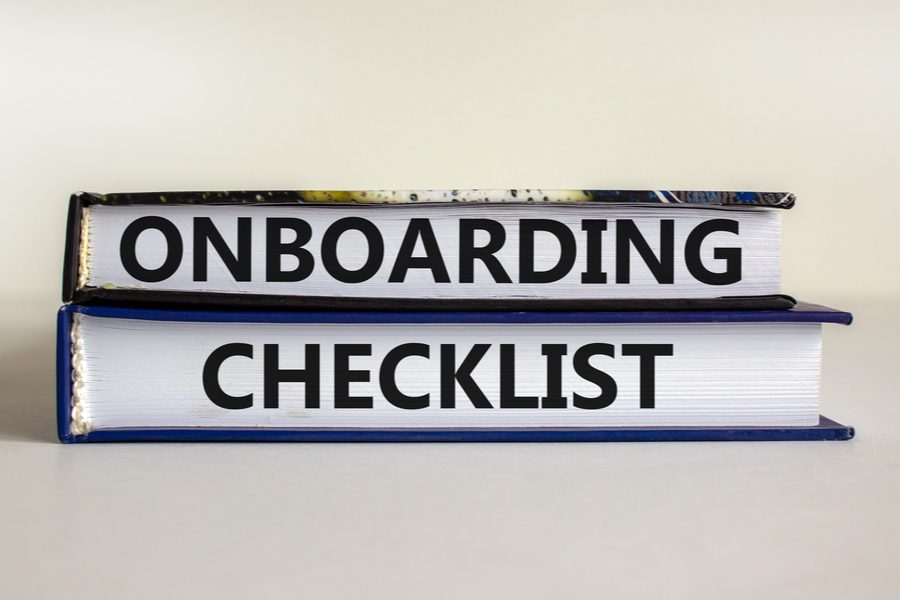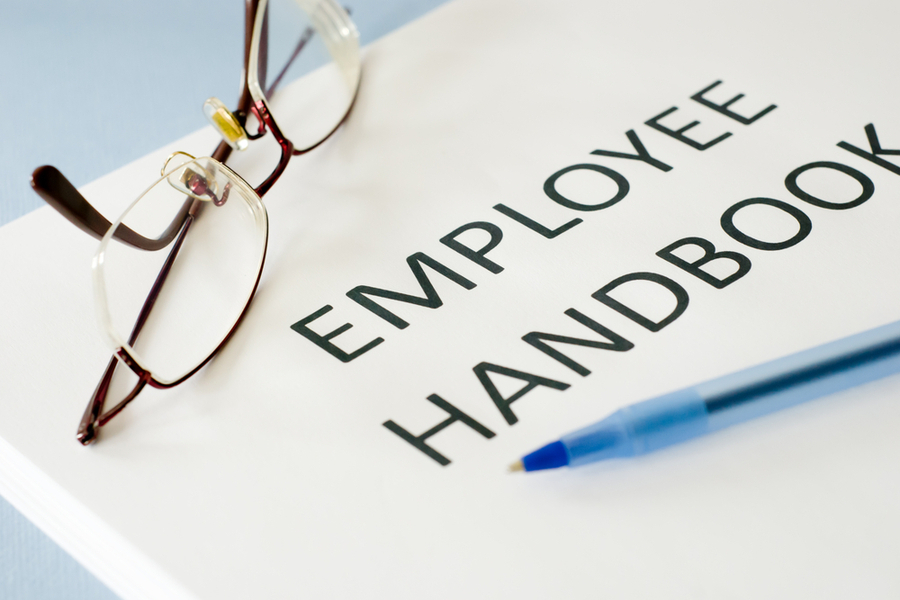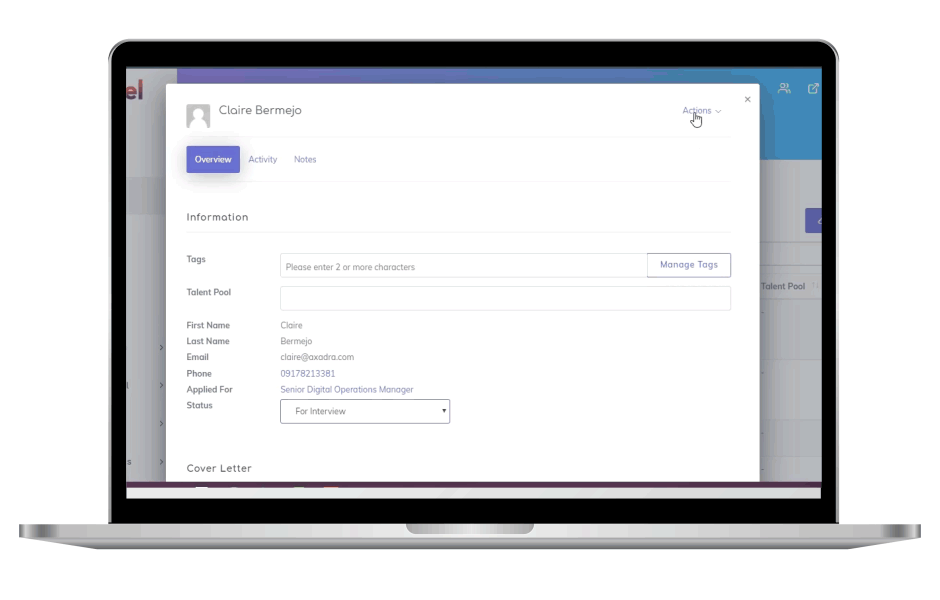As hiring specialists already know, signing on the best talents is just the first step in a long process of onboarding. Once a new employee joins your team, you need to not only welcome them into a new environment and introduce a different office culture, but you also need to equip them with enough know-how about the business processes. Because this entails a lot of planning, more and more hiring specialists are choosing to develop in-depth new hire onboarding checklists to better streamline the onboarding process for each new employee they welcome into the fold.
In this article, we’ll talk about what a new employee onboarding checklist is, why it’s an important piece in every new hire onboarding process, and how you can easily and seamlessly create one that’s perfectly tailored for your business or company.
What Are the Four Phases of Onboarding?
Before we go into creating a new hire onboarding checklist, let’s first understand what onboarding is and what the four phases of a successful onboarding are. Onboarding refers to the process of laying the groundwork for a new employee, from introducing them to the company’s procedures to allowing them to forge connections within the organization. To streamline the onboarding process, hiring specialists and human resource professionals devised an onboarding layout that divides it into four phases:
- pre-onboarding
- new hire welcoming
- job role training
- employee transition.
Pre-onboarding starts when the new employee accepts the job offer and signs the contract. This is when new hires complete paperwork, sign the needed documents and submit all the necessary requirements. New hire welcoming refers to the first few days when a new employee arrives at the office. This is when they’re given a tour of the place, introduced to their colleagues, and oriented on the organizational culture and structure.
The third phase refers to job-specific training wherein new hires are given comprehensive lessons and formal training regarding the roles that they will play for the company or organization. This can include giving them access to online lessons or in-office workshops where they can apply what they’re learning. Finally, the fourth phase of onboarding is employee transition, where new hires transition into their new role, taking on tasks and responsibilities as full-fledged employees of the company.
What Is a New Hire Onboarding Checklist?
When you were a new hire, there are a few things that you may remember as you were being welcomed into the company. You probably remember the consistent row of paperwork that needed signing and documents that needed to be submitted. While these administrative facets make up a significant (and essential) part of the onboarding process, it’s actually so much more than filling out paperwork. It’s the process of helping new employees adjust to their new roles smoothly and quickly by managing the early stages of their employment. Remember, the first days and weeks of a new hire need to be special, welcoming, and fulfilling.
Because of the flurry of things that need to be done, it’s easy for a lot of hiring specialists to just let the process proceed on its own, with a few additions here and there. However, with an organized and specialized new hire onboarding checklist, the whole process can become streamlined and easy to replicate to offer each new hire maximum attention on some of the most crucial weeks in their career at your company.
Basically, a new hire onboarding checklist works by enumerating goals, setting up schedules, listing down the necessary training, and a plethora of other essential steps that every new hire needs to take to better understand her role in the company. During their first day, every new hire should be able to:
- Align with the company’s workplace culture
- Understand the organization’s mission, vision, and core values
- Get to know the new faces and personalities they’ll work with on a daily basis, especially their teammates, managers, and clients.
If your new employee onboarding process checklist embodies the bullet points listed above, you’re on the right track to ensuring you have the best possible onboarding experience for your new hires.
Why Is a New Hire Onboarding Checklist Important?
In today’s competitive and success-driven world, it’s not enough to just hire good employees — you also have to put effort into implementing an effective employee onboarding process. Many employees have their fair share of great and horrible inductions: all the way from a fun and engaging first week with many orientation activities down to a colleague pointing at a cubicle and saying, “That’s your workstation. Good luck.” and walking off. Needless to say, the latter leaves a terrible impression.
This is why a lot of companies put a lot of effort into creating an effective employee onboarding process, starting from the moment an employee accepts the job offer. The succeeding days, weeks, and months after are crucial to developing a productive, long-lasting, and mutually beneficial working relationship between the company and the new employee. In fact, according to research from Glassdoor, organizations with a solid and effective employee onboarding process improve productivity by over 70% and new hire retention by 82%.
This is where a new hire onboarding checklist becomes crucial. If you want to engage and retain your employees from Day 1, an effective onboarding checklist will help you accomplish that. Not only will it help you establish a better linear process, but it will also help new hires ramp up faster so they can be efficient as soon as possible.
Other benefits that you can get by creating a comprehensive new hire onboarding checklist include consistency and time saved. A new hire employee checklist ensures that all employees that are hired are trained, introduced, and onboarded using the same process. You don’t have to worry about missing crucial steps or accidentally skipping introductions. With a checklist, you always get an organized approach to your hiring process – removing additional time that you might need if you’re rushing a missed task.
Building an Effective New Hire Onboarding Checklist
As there are many steps to prepare a new hire successfully, using a new employee onboarding checklist will help ensure you don’t miss any crucial items during the hectic and exciting first few days, weeks, and months.
Here’s a comprehensive new hire onboarding process checklist template that includes key interpersonal onboarding elements. Get a jump start on these essential tasks to make a solid first impression on your new employees.
Pre-First Day New Hire Onboarding Checklist
Planning your new hire’s first day from the moment they accept your job offer is pivotal to implementing an effective employee onboarding process. This is why you need to design a new employee onboarding checklist that covers even the days before they report to work or to your office (if you operate an in-office setup). To help you, here’s a pre-first day new employee checklist template:
1. Extend the offer verbally before sending an email
Don’t hesitate to call the candidate to deliver the good news. An offer letter is exciting for both the applicant and your company, and a verbal offer creates a more personal connection. If the candidate expresses enthusiasm about your verbal offer, inform them that an official letter will be sent to their email with more details.
2. Share a link to an online directory
An online directory is basically an organizational chart that maps out the roles and relationships throughout your company. It’s a user-friendly database of contacts that keeps staff in the know about milestones and key dates. This will help new employees get a clear idea of the team they’ll be working with and familiarize themselves with faces that will likely welcome them during their first days and weeks at work. Given that many companies are operating in a work-from-home setup, having this in your new employee onboarding checklist will prove to be extremely useful.
3. Collect personal information
Get their address, emergency contacts, dietary preferences, allergies, and even special needs.
4. Let new hires review the employee handbook and policy-related documents
Furnish new hires with a digital copy of your employee handbook, which typically includes an introduction to your company, services provided, and products. In some cases, a handbook may also include the policies and rules that they will need to be familiarized with before their first day. Invite your new starters to ask any questions and sign on the document to confirm that they’ve read and understood the contents.
Send the policies on time off and parental leave as well confidentiality agreements if applicable. Make sure they sign the documents.
5. Collect necessary forms and certificates
This includes withholding and payroll information, I-9 form, and any necessary certificates (for example: teaching certificates if you run an educational institution).
6. Set up your new employee’s workstation
Ensure that their workstations are adequately prepared prior to their first day. You don’t want to be running around looking for a spare laptop at the last minute. You can even decorate their cubicle with balloons and a welcome card signed by all the members of their team to make them feel extra welcome. Also, make sure the computer or laptop has all the software and tools the employee needs.
7. Send a welcome email to the company introducing the new employee
Send a welcome email to the company to announce the new hire’s upcoming first day. You can even include a picture to help employees recognize the new hires by their faces. This way, everyone will know the new hire and greet them warmly when they come in.
8. Plan the orientation day
To ensure the day is a success, set up one-on-one introductions, group meetings, and training sessions in advance. Just like how you use an interview scheduling tool when recruiting applicants, it’s best to clear everyone’s schedules beforehand so there will be no delays.
First-Day New Hire Onboarding Checklist
First days are almost always nerve-wracking for new employees since they’ll be entering a new unfamiliar environment. While you can prepare them to the best of your ability, new hires may still find their first day challenging – which is why you need to have a first day new hire onboarding checklist at the ready. At this point in time, you’re in charge of making the new employee as comfortable as possible while it’s their first day so that they can easily assimilate into their new team and into the company. Here are a few things that you need to include in your first-day new hire onboarding checklist for a smooth new hire experience:
1. Remind employees to bring the necessary eligibility documents to work
This should be the first thing on your new employee onboarding process checklist when it comes to your new hire’s starting day. Send them a reminder in the morning before they come to work about the requirements such as at least two valid IDs, Employment Authorization document, and Permanent Resident Card. You will compare these documents to the information on their I-9 form to ensure they’ve filled it out accurately.
2. Introduce the new employee to key people in the organization or company
First impressions matter during effective employee onboarding and connecting them with the key people they’ll be working closely with makes a huge difference. If possible, set up a team lunch so that they can easily feel closer to one another.
3. Assign a buddy or a mentor
This is to ensure they have a go-to person when they’re still learning the ropes of the workplace. You can also provide their mentor or buddy with a copy of your new hire onboarding checklist to ensure everyone is aligned. Their buddy should also give them an office tour. Additionally, this is a good opportunity to teach the buddy or mentor some crucial people management skills, especially for those gearing to be promoted as managers or team leads.
4. Introduce the training schedule
Show new hires the support they’re going to receive during their first few days, weeks, and months at work to make them feel confident and enthusiastic. Include the names of their mentors and trainers in their schedules so that they’ll know firsthand how to address them.
Post-First Day New Employee Onboarding Checklist
Onboarding doesn’t end on the new hire’s first day. As much as possible, you still need to be hands-on as they’re still trying to learn the ropes in their new job position. It’s also important to ensure that they can reach out to you even after their first day in case they need clarifications or if they have questions or queries about how things work at the company.
Here are a few steps that you need to include in your post-first day new employee onboarding checklist to give new employees direction and actionable items:
1. Create a 90-day new employee plan
A 90-day new employee plan is a key factor in every new employee onboarding checklist since it can give new employees clear and easy-to-reach goals up to their third month with the company. A 90-day plan should be divided into three milestones: the first 30 days, the next 60 days, and then the final 30 days. During their first month, new hires need to fulfill a plan to get them familiarized with the company’s tools, software, products, and services.
The next 60 days should be centered around their ability to take on larger responsibilities and tasks, as well as the completion of team collaboration milestones. For the last 30 days that a new hire will be under your wing, they’ll need to exhibit the skills needed for the job position, as well as proceed with tasks with little to no supervision.
2. Set up check-ins
Plan a brief check-in at the end of their first week. Check to see if they’ve signed all the paperwork and met all the people in their teams and departments. Schedule a longer, more formal check-in after their first month. This gives you ample time to assess training needs and see how they’re getting along with the rest of the team.
3. Send out a quick feedback form regarding their onboarding experience
Any new employee onboarding checklist should have this step as it will help you pinpoint areas for improvement. It also shows the new hire that you value their opinion and well-being.
Once you follow the new hire onboarding checklist template above, you can set the foundation for your new employee’s long-term success in your organization. With the right amount of support and guidance from your team, you can make a huge difference in their early productivity and performance, social integration, and long-term retention.
Virtual New Employee Onboarding Checklist for Work-From-Home Setups
Over the past two years (almost three), companies across the world have had to adapt to the new normal brought about by the COVID-19 pandemic. Social distancing and quarantine guidelines have forced hiring managers and recruiters to adapt to a fully digital hiring and onboarding process. Be it using recruiting software like interview scheduling tools or updating teams via an applicant tracking system, remote recruiting and onboarding have become the new normal.
While virtual onboarding technically follows the same protocol as face-to-face hiring processes, there are a few things that every hiring specialist needs to address to ensure an effective employee onboarding. You can still apply a few things in the new employee onboarding checklist template we’ve provided up top with just a few additions, namely:
1. Contact the new hire to discuss the company’s work setup
Prior to Day One, contact the new hire to discuss how the pandemic has temporarily changed how operations and recruitment work. Talk them through your safety expectations and requirements as well as your future plans when you decide to bring everyone back into the office.
2. Send out a welcome package for your new employee
Every new employee will need a new hire package, complete with the equipment that they’ll need for the job. This may include a desktop computer, a laptop, headsets, and other office tools and accessories that they may need for their upcoming work tasks. You may also send them a few branded merchandise, such as a mug, t-shirts, and stationery from your company’s line.
3. Create a detailed first-week calendar
In the office, it’s easy if a new hire needs some support or guidance, or if they have nothing else to do. This is more difficult to monitor in a remote onboarding situation. To ensure your new employee has the assistance they need and enough tasks for a fulfilling workday, have a calendar of pre-scheduled training sessions and meetings.
4. Furnish a new employee document checklist
With a face-to-face work setup, it’s easy to keep track of the required pre-employment documents that have already been submitted. However, if you’re on a virtual setup, it’s easy to overlook the requirements, especially during the hectic first few weeks of every new hire. To help your new hire organize her employment documents, furnish a new employee document checklist as part of her onboarding so you can both monitor her submission progress.
5. Set up “coffee mornings” to introduce new hires to their team
During an effective employee onboarding process in the new normal, don’t forget to encourage social introductions. You can set up a virtual “coffee morning” that includes the new hires with their corresponding teams. This is a great way to introduce the new employee to their colleagues and help fill the interaction gap during remote onboarding.
Create Your New Employee Onboarding Checklist Today
Remember, onboarding doesn’t stop once your new hire sits at their desk, signs the necessary documents and watches a few tutorial videos. If all the steps listed in the employee onboarding checklist above sound like work, that’s because it is! Getting onboarding right demands enthusiasm, preparation, and motivation to help make it all happen. But the payoff is huge. When new employees are onboarded effectively, they work harder and are less likely to leave the organization. It will create a virtuous cycle of engagement that propels your organization to stand out as a choice employer.
So, if you’re a hiring specialist looking to revamp your company’s onboarding process or you’re trying to start a pioneering move to assist new hires the best way you can, start creating your new hire onboarding checklist, and see how it can help your company excel.

























